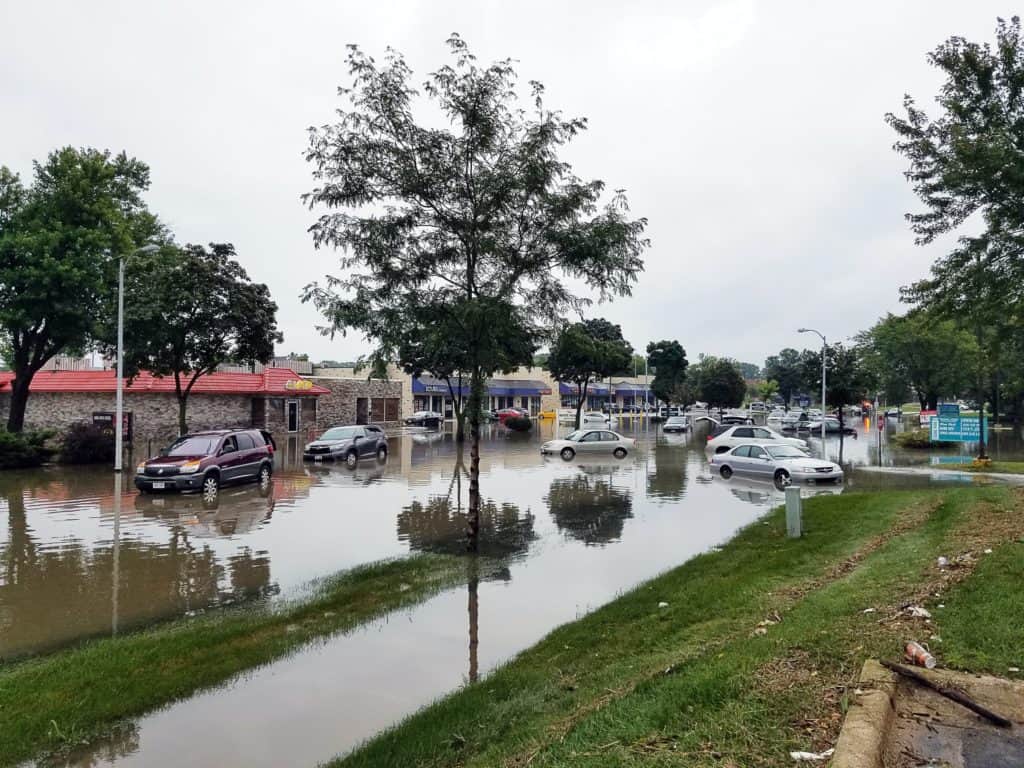As a small business owner, you never want to have to face a disaster, such as a natural disaster or sudden economic downturn. Unfortunately, challenges that are out of your control do happen, and knowing how to bounce back from them is essential to your small business’s survival. Even though you can’t always prepare for some of the emergencies that occur, the U.S. Small Business Administration offers disaster assistance.
As the United States Geological Survey (USGS) notes, increasing global temperatures can increase the potential for powerful storms. The Small Business Administration (SBA) provides disaster loans as a safety net for business owners experiencing physical damage to their properties, along with loans to cover economic disasters.
Benefits of SBA disaster assistance for small business borrowers
SBA disaster loans can help small businesses stay afloat during periods immediately after a natural disaster or economic event that harms operations or revenues. Benefits include:
- Low-interest disaster loans
- No prepayment penalties or fees
- Up to 30 years to repay
Types of SBA disaster loans
Physical damage loans
TL;DR: These loans cover physical equipment, like property, machinery, equipment, fixtures, inventory, and improvements on your lease.
If you own a business located in a declared disaster area (check the SBA directory for current declared disasters) and suffered damages, you can apply for a physical damage loan. Qualified businesses and most nonprofits are eligible to apply for a maximum of $2 million. These loans are only to be used for damages not covered otherwise by insurance.
Terms of physical damage loans:
- Interest rate at or below 4% if unable to get other credit (8% if able to get credit elsewhere)
- May be used to repair or replace real property, machinery, equipment, fixtures, inventory, other personal property, and leasehold improvements
- Collateral required for loans above $25,000 (FYI: A loan backed by physical collateral is called a secured loan, and companies use business assets to back it)
- If also applying for mitigation assistance, loan may be 20% higher than physical damage
Mitigation assistance
TL;DR: These loans help you prepare for future disasters by making improvements to your property.
Business owners can prepare for the worst with mitigation assistance. After a disaster, you may be eligible for up to a 20% increase to an SBA disaster assistance loan to make property improvements that increase safety for the future.
Suggested mitigation measures include safeguards against wind, flood, wildfire, earthquakes, and hail. Here are a few examples of mitigation steps you can take to reduce the chance of costly future damages:
- Installation of hurricane roof straps
- Landscaping to improve water runoff
- Installation of a Class A fire-rated roof
- Retrofitting masonry and concrete
Economic injury disaster loans (EIDL)
TL;DR: These loans finance your normal expenses and working capital.
To qualify for EIDL, your small business must be “unable to meet its obligations and pay its ordinary and necessary operating expenses.” Your business must also be unable to obtain credit anywhere else. These types of loans are available even if no physical property damage is present.
You may be eligible for both a physical damage loan and an EIDL, but the total of the loans cannot exceed $2 million. EIDL eligibility requirements stipulate you must be unable to obtain credit elsewhere, as determined by the SBA.
Terms of EIDL:
- Interest rate at or below 4%
- Collateral required for loans over $25,000
- Must be used for working capital and typical expenses (like health care benefits, rent, utilities, and fixed debt payments)
Military reservist loans
TL;DR: These loans cover necessary expenses incurred while an essential employee is on active duty.
A Military Reservist Economic Injury Disaster Loan (MREIDL) helps small businesses that employ military reservists who are called to active duty. These businesses are only eligible if they cannot fund recovery from the absence of an essential employee called to military duty.
As the business owner, you need to file for military reservist loans between the date the essential employee gets notified of their service call-up and one year after the employee’s discharge or release.
You can only use this loan for “necessary and ordinary” operating expenses. Lost income or profits are not approved uses. You cannot use a MREIDL to refinance long-term debt, to expand your business, or use instead of normal commercial debt.
Terms of military reservist loans:
- 4% interest rate
- Collateral required on loans above $50,000
- Must be used for ordinary operating expenses
How you can use SBA disaster loans
When applying for and using SBA disaster assistance, be sure to stay within the SBA’s guidelines for loans. Here are the guidelines:
- Physical damage loans: Use to repair or replace real property, machinery, equipment, fixtures, inventory, and leasehold improvements.
- Mitigation assistance: Add up to 20% to other SBA loans to make improvements to property.
- EIDL: Use for working capital and typical expenses.
- Military reservist loans: Use for expenses necessary for operating the business.
As the SBA stipulates, disaster loans are for expenses not covered by insurance or by the Federal Emergency Management Agency (FEMA). You can include in the loan any expenses you could have otherwise covered if the disaster hadn’t happened.
Steps to getting a disaster loan
Follow the basic steps to getting a business loan in the event of a disaster. First, search disaster declarations to see whether your area qualifies. Determine the amount of damages you need a loan for and file your application.
After applying for disaster assistance, you can check your email or log into your SBA account to find the updated status of your loan application.
If you’ve taken out an EIDL related to COVID-19, you can manage or increase that loan amount on the SBA.gov page here.
Pro tip: Get in touch with disaster loan assistance customer service center at disastercustomerservice@sba.gov ✉️
More terms to know about SBA disaster loans
One of the key benefits of SBA disaster loans is the low interest rates for borrowers. Usually, the interest rate is 4% but the cap is 8%—much lower than most state usury laws require.
Repayment terms are usually up to 30 years, and that length depends on the borrower’s ability to repay.
Collateral is required for some SBA disaster loans. For physical damage loans and EIDL above $25,000, the SBA requires physical collateral, aka property like real estate that your business occupies. For military reservist loans, collateral is only required for loans above $50,000.
SBA COVID relief loans vs. other SBA disaster loans
Although the pandemic certainly dealt a major blow to most businesses, the SBA’s disaster assistance does not only apply to pandemic-related losses. The SBA continues to operate loans to help businesses survive other disasters.
COVID-19 disaster relief included the COVID-19 economic injury disaster loan, which enabled small business owners to apply for assistance. This program helped businesses continue operations and overcome adverse effects of the pandemic. The COVID EIDL program is no longer accepting new disaster loan applications.
The Paycheck Protection Program (PPP) was available through the SBA as well. It stopped taking applications on May 31, 2021. PPP loans had a 1% interest rate and options for loan forgiveness. As of early 2022, 80% of all PPP loans had been fully or partially forgiven.
Let’s hear two tips from James Chittenden, founder of OneClick Advisor and former Small Business Development Center (SBDC) consultant:
- Always have three years of income statements, balance sheets, and business tax returns ready. Keep them in a waterproof and fire-resistant place. That way, you can easily access them and quickly apply for disaster funds. The faster you can do this, the faster the funds will be disbursed to you.
- Check your insurance regularly. If you have inventory, insure it. If you are concerned about key person coverage or business interruption coverage, get quotes. There are many things you can insure. Keep photos of what you insure on a thumb drive.”
Last word on SBA disaster loans
Small businesses can better handle severe weather emergencies and other disasters if they consider the SBA’s disaster assistance programs. Whether your business suffered physical or economic damages, you may be eligible for loans through the SBA.
SBA disaster loan options include: Physical damage loans, mitigation assistance for property improvement, economic injury disaster loans (EIDL) for normal business expenses, and military reservist loans for those on active duty.
Much like a go kit that you can grab and go to help you escape an emergency, knowing how to get emergency SBA disaster loans should be a part of your business survival kit.


